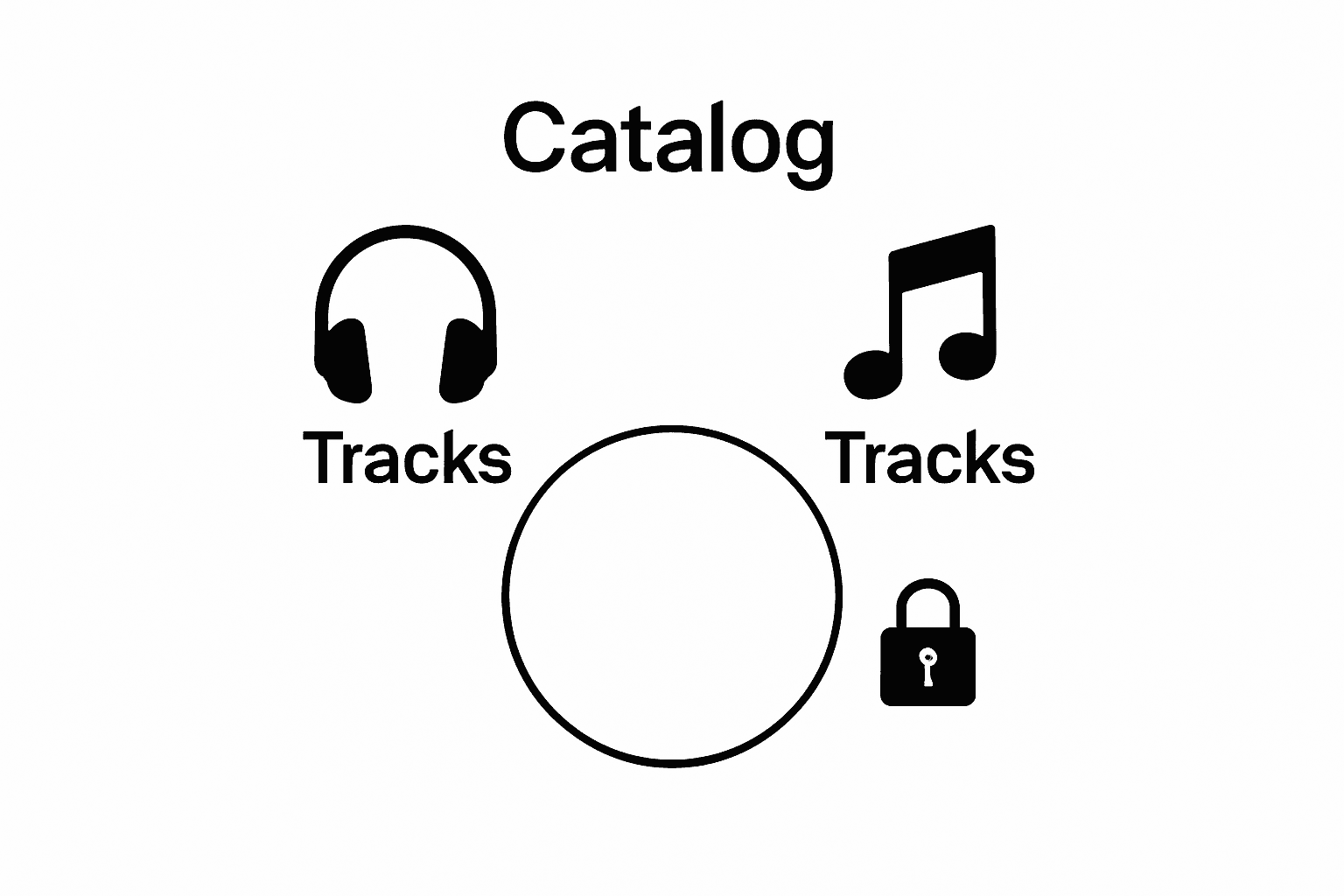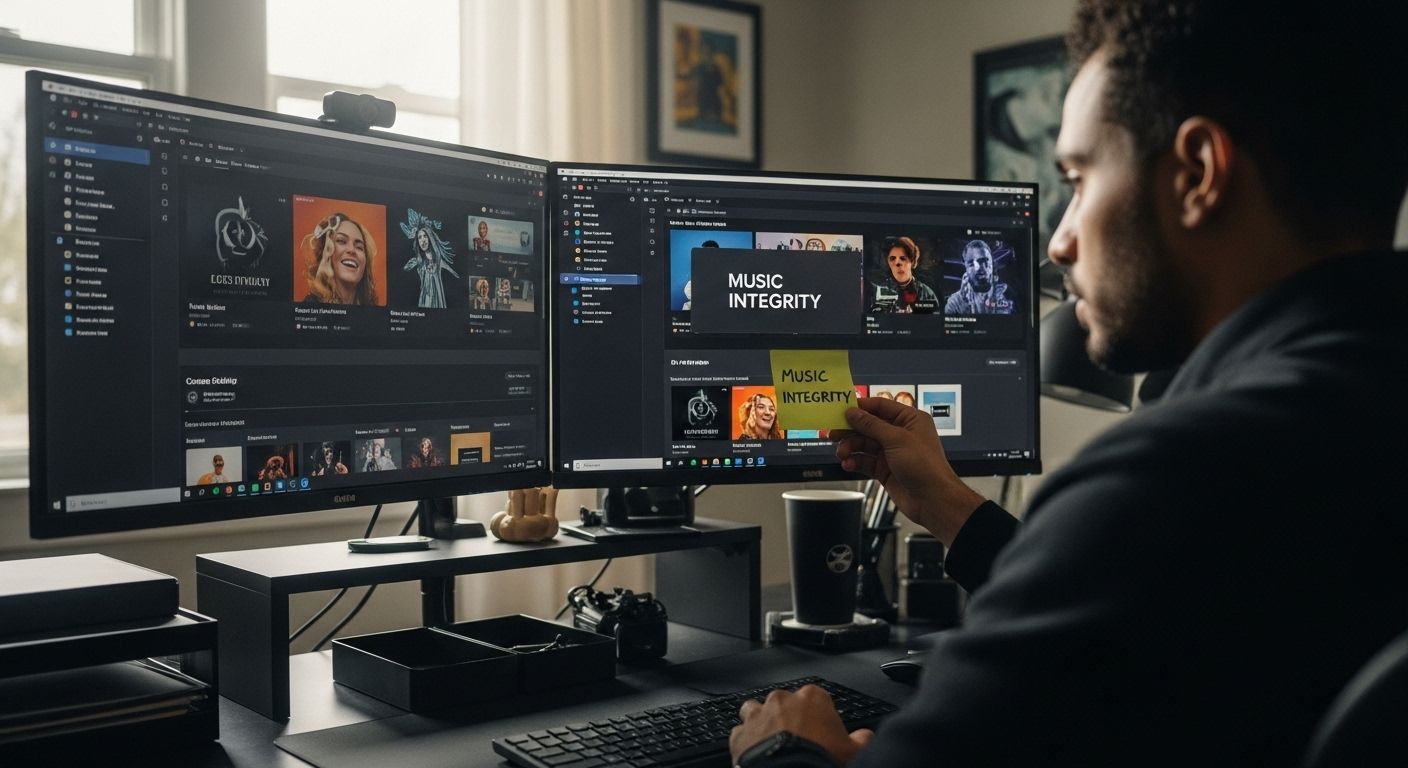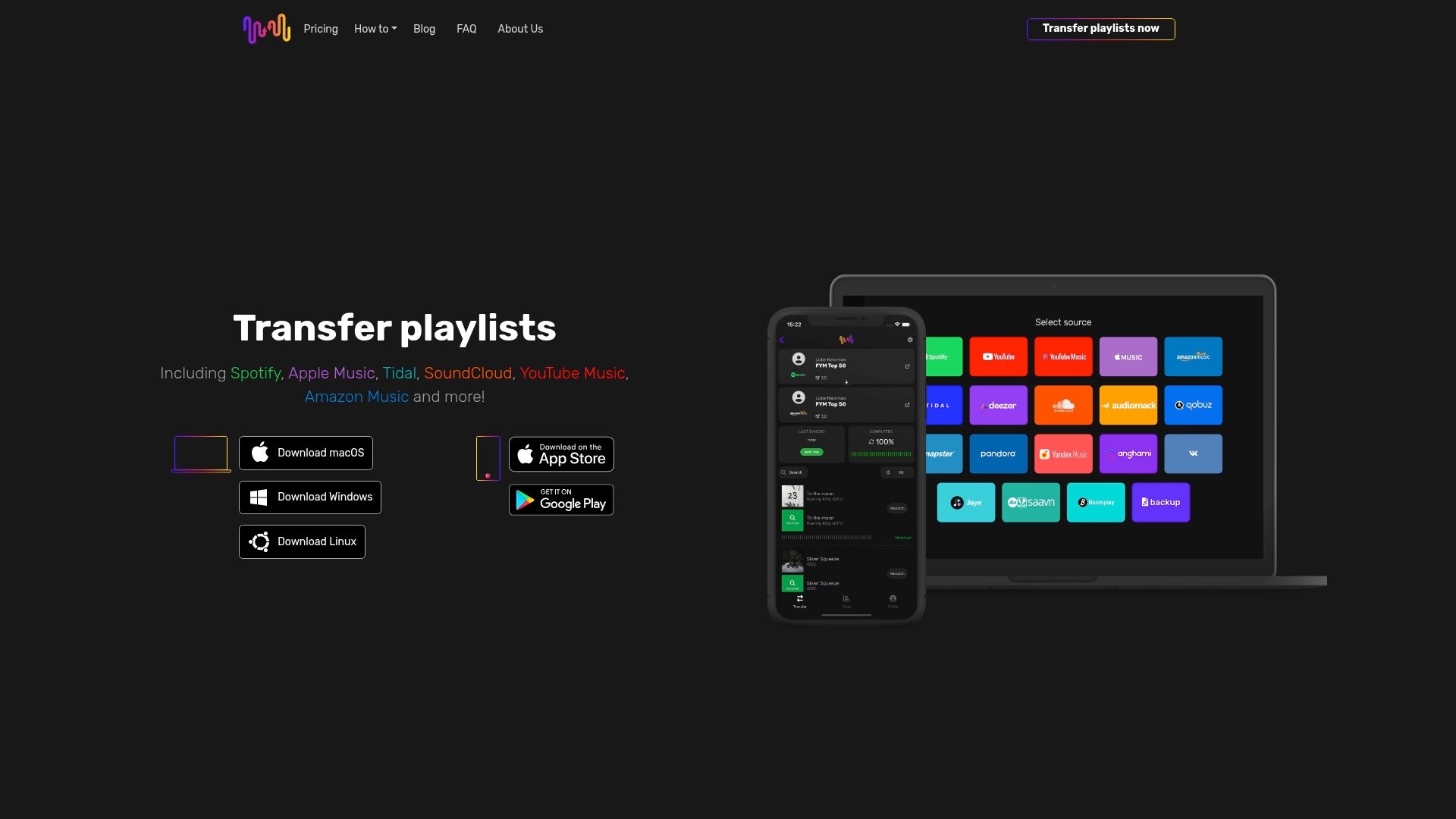Moving playlists between music apps sounds like a nightmare. Imagine losing years of perfectly curated tracks just because you want to try a new service. Yet, efficient playlist transfer tools now let users migrate entire collections with almost zero effort, which flips the old hassle on its head. The real surprise is these tools do so much more than copy songs and actually safeguard your music’s original feel and order no matter where you listen next.
Table of Contents
- What Is Playlist Transfer And Why It Matters
- Understanding The Core Concept
- The Significance Of Seamless Music Migration
- Key Concepts In Playlist Transfer Technologies
- Metadata Matching And Song Recognition
- Intelligent Song Mapping Strategies
- Understanding Compatibility Among Streaming Services
- Technical Barriers In Music Platform Integration
- Licensing And Content Ownership Complexities
- Best Practices For Preserving Music Integrity
- Maintaining Audio And Metadata Fidelity
- Playlist Structural Integrity Protection
- Real-World Applications Of Playlist Transfer Tools
- Professional And Creative Use Cases
- Personal Music Ecosystem Management
Quick Summary
| Takeaway | Explanation |
|---|---|
| Utilize playlist transfer tools | Streamline the migration of curated music collections between platforms effortlessly and save time. |
| Preserve playlist structure and metadata | Ensure original song order and metadata accuracy during the transfer to maintain a consistent listening experience. |
| Understand streaming service compatibility | Recognize the unique catalog differences and licensing agreements to avoid issues during playlist migration. |
| Implement audio preservation strategies | Use verification mechanisms to maintain audio quality during the transfer, ensuring no degradation occurs. |
| Adapt to changes in digital music platforms | Leverage transfer tools to adjust quickly to switching platforms, preserving your musical preferences and collections. |
What is Playlist Transfer and Why It Matters
Playlist transfer represents a critical digital music management process enabling users to move their meticulously curated music collections seamlessly between different streaming platforms. This technological solution addresses the complex challenge of music library migration, eliminating the tedious manual task of rebuilding playlists across multiple services.
Understanding the Core Concept
At its fundamental level, playlist transfer involves automatically reproducing an existing playlist's structure, song selections, and ordering from one music streaming service to another. Music library migration research suggests that effective transfer mechanisms must consider multiple factors beyond simple song matching, including playlist context, transition quality, and user preferences.
Key characteristics of playlist transfer include:
- Preserving original playlist sequence and organization
- Maintaining accurate song metadata during migration
- Handling potential discrepancies between platform song libraries
- Ensuring minimal user intervention during the transfer process
The Significance of Seamless Music Migration
Playlist transfer has become increasingly important as music consumers navigate an increasingly fragmented streaming ecosystem. Users frequently switch between platforms due to pricing, feature differences, exclusive content, or personal recommendations. Without efficient transfer tools, music enthusiasts risk losing years of carefully curated playlists.
The process is particularly crucial for:
- Music collectors with extensive libraries
- Professional DJs managing performance playlists
- Users exploring new streaming platform features
- Individuals seeking better music recommendation algorithms
By understanding playlist transfer best practices, music lovers can ensure their musical journeys remain uninterrupted. Learn more about our comprehensive playlist transfer solutions that simplify this complex digital music management challenge.
Key Concepts in Playlist Transfer Technologies
Playlist transfer technologies represent a sophisticated ecosystem of digital music management solutions designed to bridge gaps between diverse streaming platforms. These technologies leverage advanced metadata matching, algorithmic song identification, and intelligent mapping strategies to ensure seamless music library migration.
Metadata Matching and Song Recognition
Metadata matching forms the core technological foundation of playlist transfer. According to music metadata research, successful transfer depends on precise identification and alignment of song attributes across different streaming platforms. This complex process involves comparing multiple identifiers such as track name, artist, album, duration, and unique digital fingerprints.
Key technological components include:
- Fuzzy matching algorithms that accommodate slight variations in song metadata
- Machine learning models trained to recognize song similarities
- Cross-platform database comparisons
- Advanced audio fingerprinting techniques
Intelligent Song Mapping Strategies
Intelligent song mapping goes beyond simple one-to-one track replacement. The technology evaluates multiple potential song matches, considering factors like audio quality, user listening history, and platform-specific music catalogs. This nuanced approach ensures that transferred playlists maintain their original musical essence and listener experience.
The mapping process involves sophisticated decision-making protocols that prioritize:
- Exact track matches with identical metadata
- Similar tracks with comparable audio characteristics
- Alternative versions or live recordings when exact matches are unavailable
- User-defined preference settings for match selection
Our comprehensive guide to playlist migration explores these intricate technological mechanisms that transform how music enthusiasts manage their digital libraries. By understanding these key concepts, users can appreciate the complex engineering behind seamless playlist transfers.
Understanding Compatibility Among Streaming Services
Streaming service compatibility represents a complex technological landscape where diverse platforms operate with unique music catalogues, metadata structures, and licensing agreements. These variations create significant challenges for users attempting to transfer playlists across different music streaming environments.

Technical Barriers in Music Platform Integration
Music streaming platforms maintain distinctive technical infrastructures that fundamentally impact playlist transfer capabilities. Catalog differences emerge as the primary obstacle, with each service maintaining its own licensed music collection, resulting in potential song availability discrepancies.
Key technical compatibility challenges include:
- Varying audio file encoding standards
- Different metadata schema and storage mechanisms
- Proprietary digital rights management protocols
- Unique song identification indexing systems
Licensing and Content Ownership Complexities
Licensing represents another critical dimension of streaming service compatibility. Research on digital music ecosystems reveals that music licensing agreements significantly influence cross-platform playlist transfers. Record labels, artists, and streaming platforms negotiate complex agreements that determine song availability and transferability.
Critical licensing factors affecting compatibility encompass:
- Regional content restrictions
- Exclusive streaming rights
- Artist-specific distribution agreements
- Temporary licensing windows
Explore our detailed guide on cross-platform playlist migration to understand the nuanced strategies for navigating these intricate compatibility challenges. By comprehending these technical and legal complexities, music enthusiasts can make informed decisions about managing their digital music collections across multiple streaming platforms.
The following table compares key technical and licensing barriers encountered when transferring playlists between different streaming platforms. This helps clarify the challenges users may face during migration.
| Compatibility Challenge | Description |
|---|---|
| Catalog Differences | Each platform has a unique licensed music collection, leading to song availability discrepancies. |
| Audio File Encoding Standards | Services may use different audio formats or encoding standards, affecting the transfer process. |
| Metadata Schema Variations | Platforms store and structure song metadata differently, causing potential mismatches during migration. |
| Digital Rights Management (DRM) | Proprietary DRM systems can limit access or transfer of specific tracks between services. |
| Unique Song Indexing Systems | Individual services use their own identification systems, complicating automated song matching. |
| Regional Content Restrictions | Some songs or albums are available only in specific regions due to licensing agreements. |
| Exclusive Streaming Rights | Platforms may have exclusive rights to certain content, making it unavailable elsewhere. |
Best Practices for Preserving Music Integrity
Music integrity during playlist transfer encompasses maintaining the original artistic intent, audio quality, and structural composition of music collections. This process involves sophisticated technological strategies designed to minimize potential data loss and ensure the highest fidelity of musical experiences across different streaming platforms.
Maintaining Audio and Metadata Fidelity
Audio preservation represents the most critical aspect of playlist transfer. Digital preservation research recommends implementing robust verification mechanisms to protect musical content during migration. These mechanisms involve advanced checksum technologies and comparative analysis techniques that validate each track's authentic representation.
Key preservation strategies include:
- Generating cryptographic hash values for precise track identification
- Comparing audio fingerprints across platforms
- Tracking potential quality degradation during transfer
- Establishing redundant backup protocols
Playlist Structural Integrity Protection
Beyond individual track preservation, maintaining the holistic playlist structure becomes paramount. This involves protecting not just the songs themselves, but their original sequence, grouping, and contextual relationships. Advanced playlist transfer technologies employ intelligent mapping algorithms that reconstruct playlist semantics across different streaming environments.
Critical structural preservation considerations involve:
- Maintaining original track ordering
- Preserving playlist folder or collection hierarchies
- Retaining user-generated metadata and annotations
- Handling platform-specific playlist limitations
Explore our comprehensive guide to playlist migration strategies to understand the intricate techniques that safeguard your musical collections. By implementing these best practices, music enthusiasts can confidently transfer their playlists while ensuring minimal compromise to their carefully curated musical experiences.

Real-World Applications of Playlist Transfer Tools
Playlist transfer tools have emerged as transformative solutions addressing critical challenges in digital music consumption. These technologies extend far beyond simple song migration, offering innovative approaches to music library management, personal curation, and professional music organization across diverse user scenarios.
Professional and Creative Use Cases
Music professionals represent a significant user segment benefiting from advanced playlist transfer capabilities. DJs, music producers, and radio programmers require robust tools that can rapidly migrate complex music collections while preserving intricate playlist structures and nuanced arrangements.
Key professional applications include:
- Seamless performance preparation for live events
- Rapid music library consolidation during platform transitions
- Archiving and backing up extensive music collections
- Facilitating collaborative music project management
Personal Music Ecosystem Management
Research on playlist generation technologies reveals that individual music enthusiasts increasingly depend on transfer tools to maintain personalized listening experiences. These tools enable users to adapt their music libraries dynamically, responding to changing platform ecosystems, subscription models, and personal preferences.
Significant personal use scenarios encompass:
- Migrating music libraries during service subscriptions changes
- Preserving carefully curated playlist collections
- Exploring new streaming platforms without losing existing music
- Creating backup copies of personal music libraries
Explore our comprehensive guide to multi-platform music management to understand how playlist transfer tools can revolutionize your music listening experience. By leveraging these advanced technologies, users can maintain musical continuity and flexibility in an ever-evolving digital landscape.
This table outlines common professional and personal use cases for playlist transfer tools, illustrating their value for different user groups across various scenarios.
| User Type | Typical Use Cases |
|---|---|
| Professional (DJs, Producers) | Seamless performance preparation, rapid library consolidation, archiving music, collaborative project management |
| Personal/Individual | Migrating music during service changes, preserving curated playlists, exploring new services, creating backups |
Effortless Playlist Transfer That Preserves Your Music Integrity
Struggling with the hassle and uncertainty of moving playlists between streaming platforms? After learning about best practices in playlist transfer, you know how important it is to preserve your music’s structure and sound quality. Many users face the frustration of losing song order, mismatching tracks, and spending hours on manual rebuilding. Free Your Music was created to eliminate these headaches by providing a trusted, automated, and secure solution.

Right now, you can avoid the risk of lost playlists or broken music collections. Take advantage of FreeYourMusic.com for an all-in-one platform that offers accurate song matching, automatic playlist synchronization, unlimited transfers, and reliable support. Want to ensure your curated libraries stay intact when switching services? Discover more about how our solution aligns with playlist transfer best practices and see real-world uses in our multi-platform music management guide. Don’t let platform limits or time-consuming transfers disrupt your music experience. Start your seamless migration today. Visit FreeYourMusic.com and let your playlists move with you—flawlessly.
Frequently Asked Questions
What is playlist transfer?
Playlist transfer is the process of moving your music playlists seamlessly between different streaming platforms without the need to manually recreate them.
Why is playlist transfer important for music lovers?
Playlist transfer is important because it allows users to retain their carefully curated playlists as they switch between different music streaming services, preventing the loss of unique music collections and experiences.
How does metadata matching work in playlist transfer?
Metadata matching involves identifying and aligning song attributes from different streaming platforms, utilizing track names, artist details, and other identifiers to find corresponding songs accurately during the transfer process.
What are the best practices for ensuring a successful playlist transfer?
To ensure a successful playlist transfer, users should verify audio quality during the migration, maintain the original playlist structure, and utilize tools that accommodate discrepancies in song availability across various streaming platforms.






